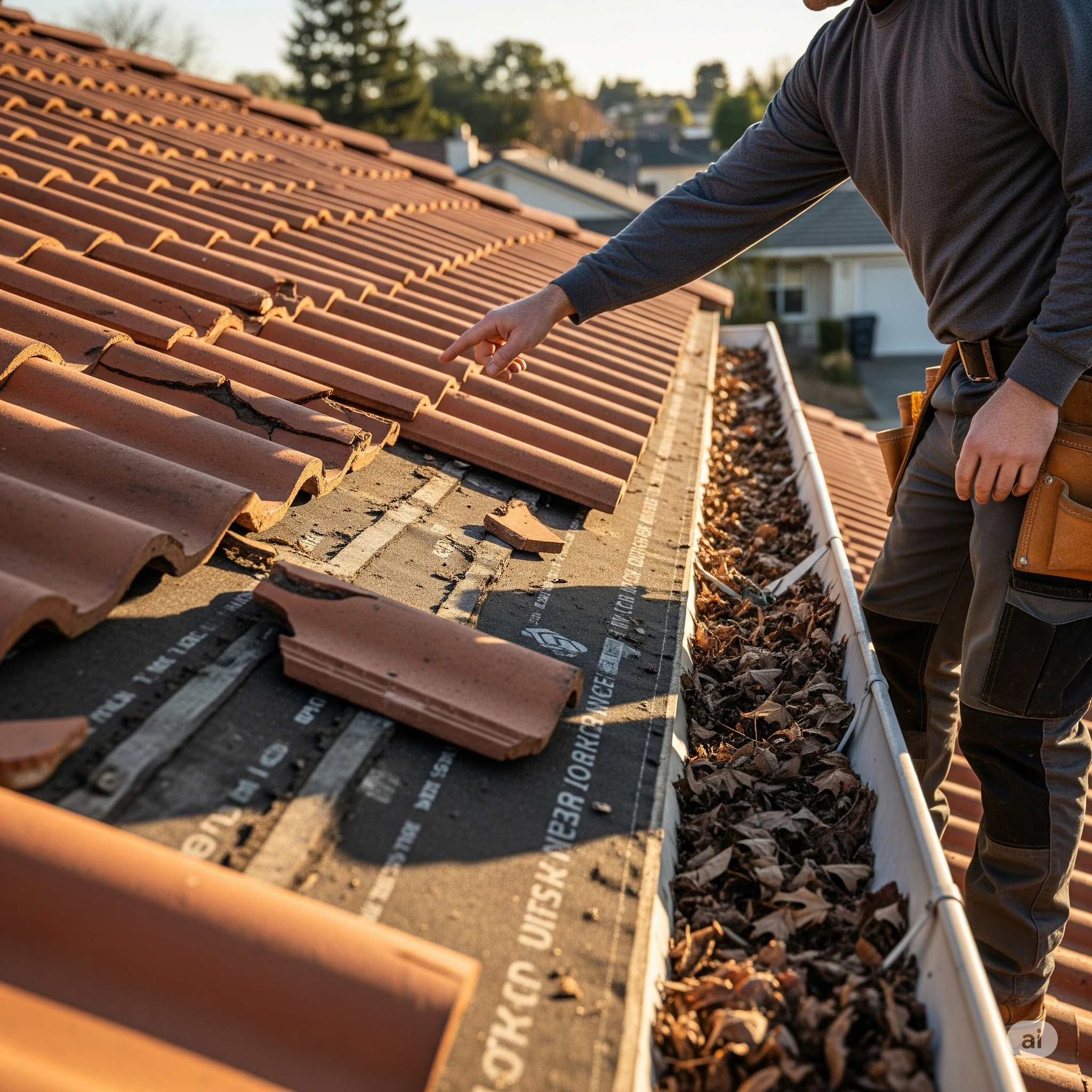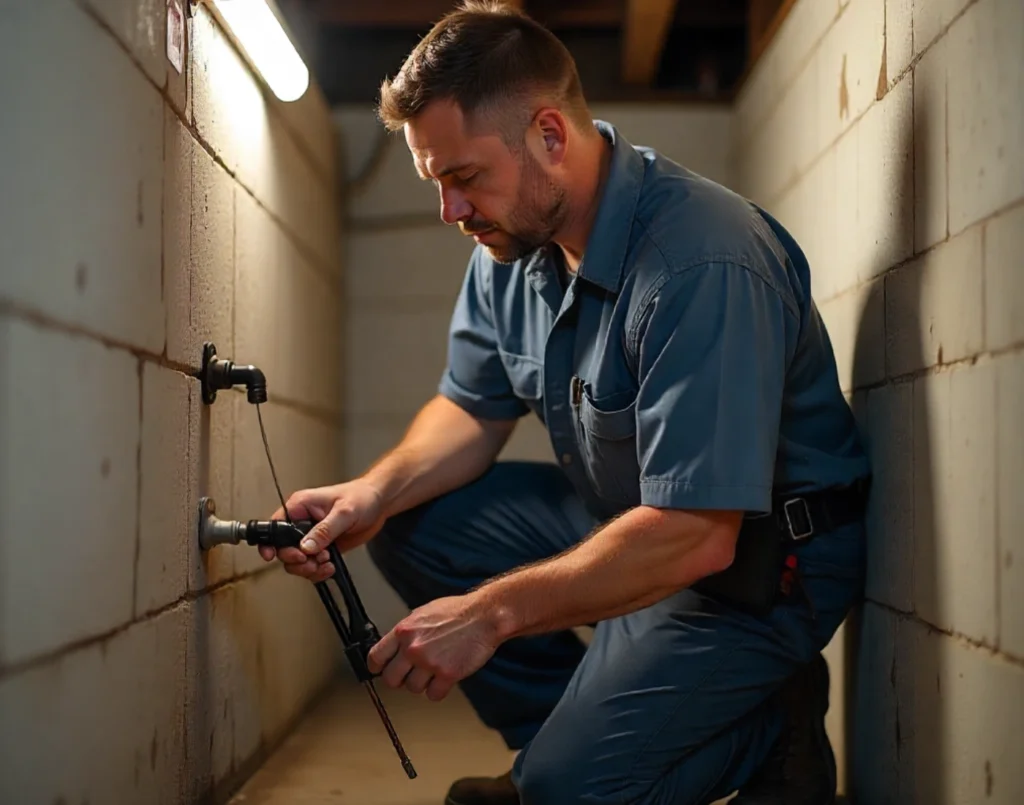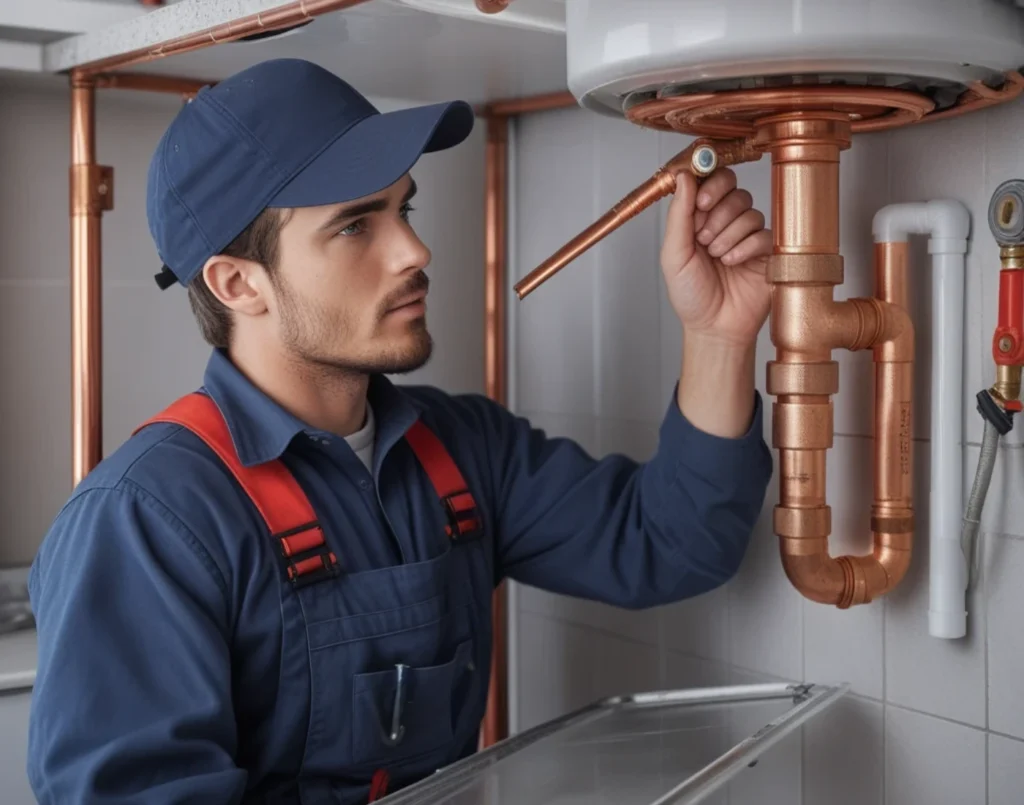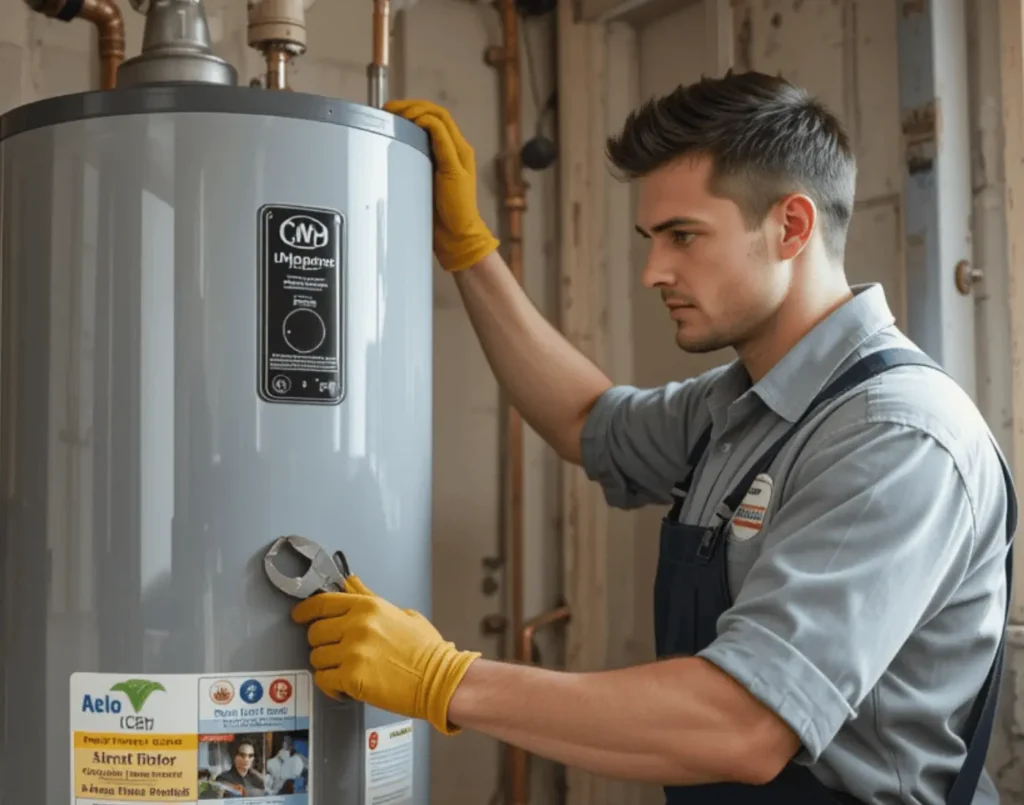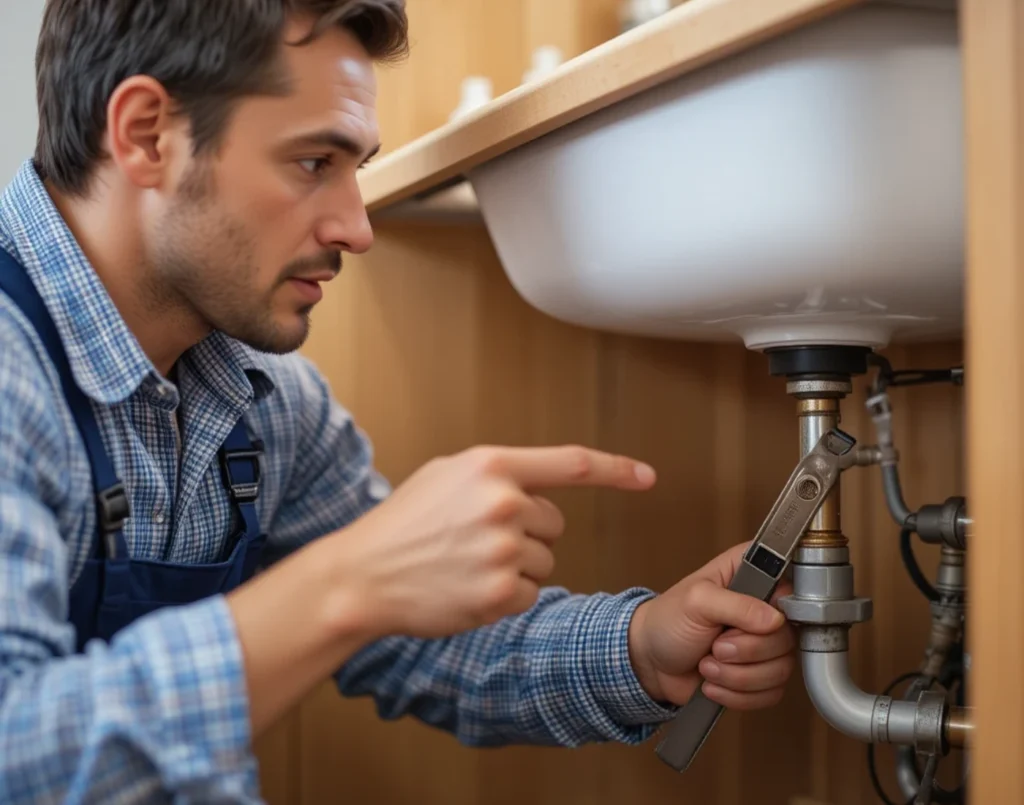Discovering water dripping through your ceiling can turn any homeowner’s day upside down. Tile roof leaks need quick action. This helps avoid expensive damage and keeps your investment safe.
Tile roof leak repairs typically cost $300–$1,500, depending on the damage. Minor fixes (like matching broken tiles) can be DIY‑friendly. Still, major issues, such as damaged underlayment or flashing, are best handled by experienced professionals to prevent recurring leaks and structural damage.
What Causes Tile Roof Leaks?
Knowing the root causes of issues at home is key. It helps homeowners spot problems before they grow. Fixing these issues early can stop them from growing into expensive repairs. This saves you money and stress later on.
Common Causes of Tile Roof Leaks
-
Cracked or broken tiles from weather damage or age.
-
Deteriorated underlayment that fails to provide waterproof protection.
-
Damaged flashing around chimneys, vents, and roof intersections.
-
Clogged gutters are causing water backup and overflow.
Severe weather events can cause multiple issues simultaneously. A recent hailstorm might crack several tiles while also loosening flashing connections.
Identifying Leak Symptoms
Leaks in your home often show up in different ways. Water stains on ceilings or walls are common signs of unwanted moisture. Musty odors might also signal hidden mold. Missing tiles are easy to notice, but small cracks in tiles can be harder to spot. These cracks let water in, causing damage that may only appear as it worsens. Watching for these signs can help you fix leaks before they cause serious problems.
How Much Do Repairs Cost?
Repair costs can change a lot based on a few factors. This includes the damage amount, material types and quality, and local labor costs. Additionally, specialized repairs or emergency services may further impact the overall expense.
Factors Influencing Repair Costs
-
Roof accessibility affects labor time and safety requirements.
-
Tile availability impacts material costs and project timelines.
-
Damage severity determines whether repairs or replacements are needed.
-
Local labor rates vary by geographic region.
Emergency repairs during storms typically cost 20-30% more than scheduled maintenance. Local roofing supply stores give contractors cost estimates based on current material prices.
Breakdown of Repair Costs by Issue
-
Individual tile replacement: $150-$400 per section
-
Underlayment repair: $500-$1,200 depending on area size
-
Minor flashing repairs: Typically range from $200 to $500.
-
Full flashing replacement around chimneys: Can cost between $800 and $1,500.Prices depend on the materials used and professional labor involved.
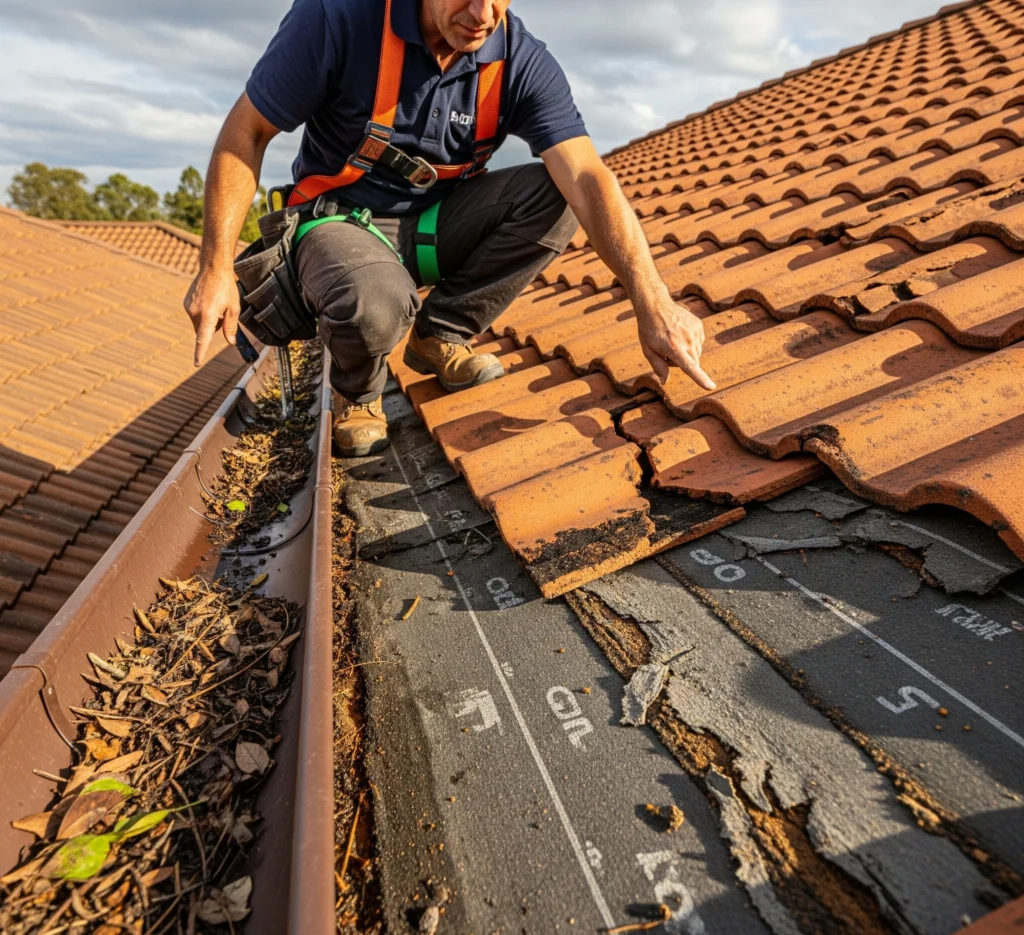
What Are Your Repair Options?
Deciding between DIY repairs and hiring a pro depends on a few things. First, think about your skills. Then, consider how complex the task is and how safety matters. Finally, check if you need a warranty. With the right tools and know-how, DIY repairs can save you money. But they can also lead to mistakes or even void your warranty. Expert services offer information and peace of mind. They’re specifically helpful for complicated or unstable responsibilities.
DIY Repair vs. Professional Services
-
DIY advantages: lower costs and immediate action capabilities
-
Professional benefits: warranty coverage and expert problem diagnosis.
-
Safety considerations: Tile roofs need specialized equipment and experience.
-
Insurance implications: Some policies require professional installation.
Walking on tile roofs without proper knowledge can cause more damage. One homeowner’s attempt to fix a small leak resulted in $3,000 in broken tiles when he stepped incorrectly.
Popular Repair Techniques
Proper roof repairs need the right materials and methods for lasting results. Tile replacement is key. You must match substances and sealants to restore the roof’s integrity and appearance. Another important step is underlayment patching. Here, compatible waterproof membranes protect against water intrusion. Temporary solutions, like roof cement, can provide short-term relief.
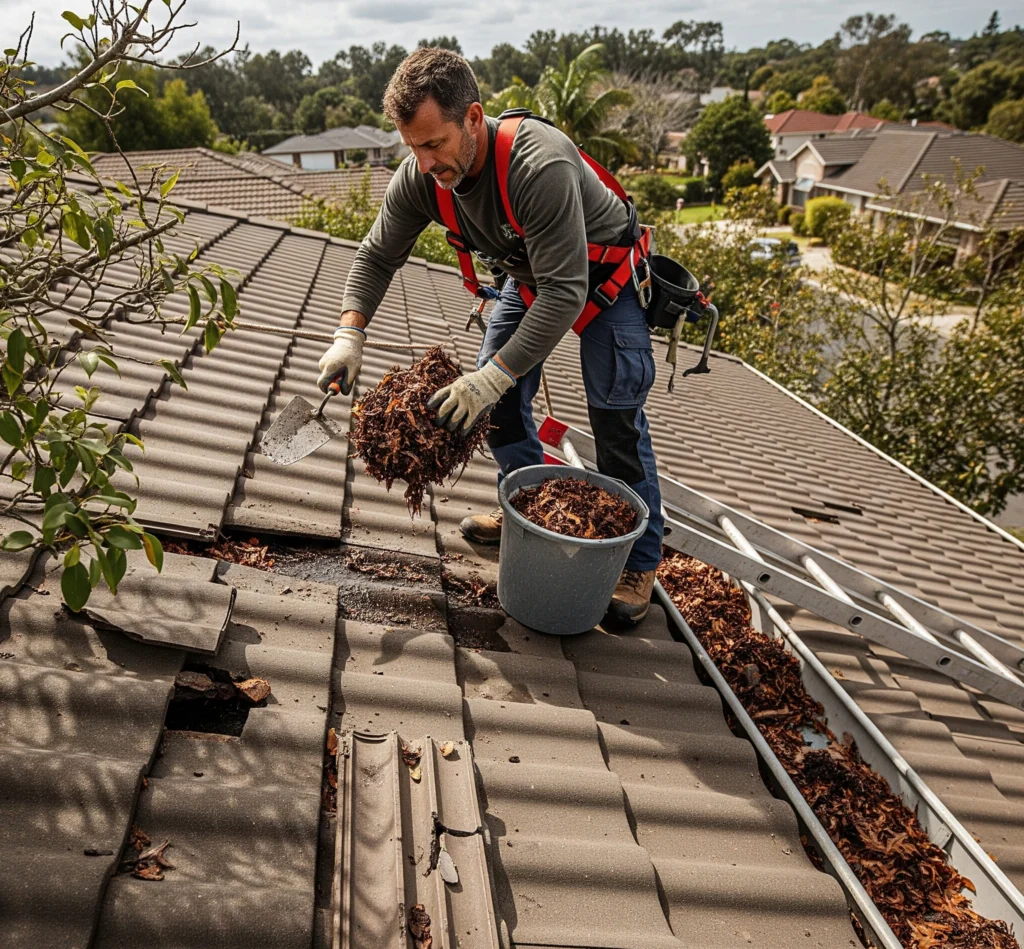
How Can You Prevent Future Issues?
Preventive maintenance costs less than emergency repairs. It also helps find potential problems early, saving you time and money later. Regular inspections and maintenance can make your roof last longer. This keeps it strong and dependable for many years.
Regular Inspections
-
Biannual visual checks from ground level using binoculars.
-
Professional inspections every 3 to 5 years or after severe weather.
-
Gutter cleaning prevents water backup and overflow issues.
-
Tree trimming reduces debris accumulation and impact damage.
Post-storm inspections help identify damage before small problems become major leaks. Many roofing contractors offer free storm damage assessments.
Cleaning and Debris Removal
Leaves and branches hold moisture on tiles. This helps moss and algae thrive. Over time, this buildup can weaken tiles, causing cracks, leaks, and structural issues. Ordinary cleansing is vital to preserve tiles’ strong, durable, and damage-resistant properties. Clearing particles and preventing moss growth can save money on upkeep.
Timely Repairs and Upgrades
Small issues can become costly if not fixed early. Cracks or minor roof damage may seem small, but can allow water in, causing hidden damage. A $ two-hundred-dollar restoration may become hundreds in structural upkeep if neglected. It’s always better to deal with those troubles early.
When installing new HVAC equipment or skylights, updating the flashing is crucial. Proper flashing seals your roof, prevents leaks, and protects your home. Skipping this step can result in steeply priced repairs down the road.
What Else Should You Consider?
Many factors can affect how you manage leaks in your tile roof. The roof’s age, tile type, weather conditions, and maintenance history are key factors. These elements are key to finding the best way to fix leaks and stop future problems.
Availability of Matching Tiles
-
Discontinued tile styles may require creative solutions or partial roof replacements.
-
Color matching becomes challenging as existing tiles weather and fade.
-
Special-order tiles can delay repairs and increase costs.
-
Alternative tile options might provide better long-term solutions.
Keep extra tiles from the first installation. They help you match perfectly for future repairs. Homeowners often store tiles in garages or sheds for this purpose.
Impact of Roof Age on Repairs
Roofs older than 20 years might need full upgrades instead of small repairs. Aging underlayment often fails shortly after tile repairs, creating recurring leak issues.
Insurance and Warranty Considerations
-
Take photos to document all damage before starting any repairs.
-
Review warranty requirements, as some may require professional installation.
-
Provide clear evidence to insurance adjusters to differentiate storm damage from normal wear.
-
Opt for professional repairs to benefit from warranties that cover materials and artistry.
Take Action to Protect Your Investment
Tile roof leaks require prompt attention, but don’t have to break your budget. Regular maintenance, good repairs, and expert advice help keep your home dry and safe. Schedule that roof inspection you’ve been postponing; your ceiling will thank you.
Frequently Asked Questions
What causes leaks in tile roofs?
Cracked or broken tiles. Deteriorated underlayment. Damaged flashing around vents or chimneys. Clogged gutters. Improper installation.
Can I repair a tile roof leak myself?
Only for minor issues (replacing single tiles). For cracked tiles or damaged underlayment, hire a seasoned professional. Tile roofs need special skills to prevent further damage.
How much does tile roof leak repair cost?
$300–$1,500+, depending on leak severity. Simple tile replacement: $200–$500. Extensive underlayment/flashing repairs: $1,000–$3,000+.
How do I discover a leak in a tile roof?
Check the attic for water stains during the rain.
Inspect for cracked or misaligned tiles.
Examine flashing and valleys.
Use a hose test (if safe) to isolate the area.
How to prevent future tile roof leaks?
Replace broken tiles immediately.
Clean debris from valleys/gutters.
Seal flashing edges annually.
Schedule professional inspections every 2 to 3 years.

